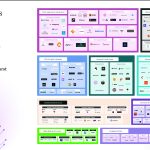
- SWIFT will begin the migration of its cross-border payments system onto the new ISO 20022 standard on 20 March 2023.
- FXC Intelligence has published a report detailing everything payment professionals need to know about the ISO 20022 standard and what the transition means for cross-border payments.
- The migration is no easy feat and although there could be real benefits to cross-border payments, there is a risk that the benefits will take longer to materialise if financial institutions de-prioritise what is looking to be a complex and long road ahead.
After numerous delays, 20 March will see SWIFT finally beginning the migration of its cross-border payments system onto ISO 20022 – the global standard that aims to standardise how payment messages are sent worldwide.
This is a huge undertaking that all payment professionals and banks have to contend with in order to ensure a smooth transition. It will especially affect organisations that currently send or receive SWIFT messages using the legacy MT format. That is why FXC Intelligence has published its report today to help the industry understand the transition and what it might mean for cross-border payments.
So why is SWIFT changing its financial messaging system?
For years, financial institutions have been sending and receiving MT messages via SWIFT to make cross-border payments. Some experts say this format doesn’t clearly show where payments originate from, leading to longer anti-crime checks and sanction screening.
Under ISO 20022, financial institutions will be changing the payment messages they send and receive via SWIFT to the new MX format, which is more transparent, holds more data and is expected to boost interoperability between banks.
In a nutshell: if banks are all sending messages that are structured in line with SWIFT’s cross-border payments and reporting (CBPR+) guidelines, the communications behind these payments will be more efficient, which could ultimately lower costs.
Explaining why SWIFT is taking action now, Joe Baker, author of the FXC intelligence report, said:
“This isn’t a new system. Since 2004, many banks have already adopted ISO20022 for high-value financial messaging across the global payments system.
“However, some banks haven’t been able to update their legacy systems at the same rate as others due to technical challenges.
Advocates of ISO 20022 say that it will improve security, enable deeper analysis of payments and make them faster and less costly. That’s why SWIFT is now taking action to encourage ISO 20022 adoption across all financial institutions using the SWIFT network.”
The migration has already been in effect since August 2022, when SWIFT began enabling ISO 20022 messages for cross-border payment businesses on an ‘opt-in’ basis, but from March 20 2023 the migration is beginning more widely across SWIFT’s participants.
From March, financial institutions sending and receiving messages through SWIFT need to have updated their messaging interfaces so that they can at least receive MX payment messages, or translate MX into MT during the cotransition period, which lasts until November 2025. After that date, banks will need to be able to send and receive MX messages via SWIFT.
However, this is no easy feat and there is a possibility that some banks will not prioritise the migration when there are other challenges demanding their attention. Daniel Webber, CEO and Founder of FXC intelligence, explains:
“For years, the current MT financial messaging format has been part of the fabric of banks’ messaging systems, so this migration will require banks to completely restructure their messaging interfaces and put in place solutions to ensure the legacy messaging system that’s ingrained into their infrastructure can continue to work effectively.
“It is a monumental task and widespread adoption of ISO 20022 across users of SWIFT is crucial in order to see the touted benefits of the new messaging format.
“I do see a risk that the overwhelming prospect of the migration will see banks de-prioritising the changeover, which in turn will inhibit the industry from reaping the benefits of the new system for many years to come.”
There is a long road ahead and FXC Intelligence will be watching closely to see what the real impact will be on cross-border payments and when the migration might start paying off.
Additional information
- Financial institutions send messages to enable the movement of payments across the globe via SWIFT. The migration will see these institutions replace existing payment messages using the MT format and replace it with the new ISO 20022-compliant MX messages.
- Read the full FXC Intelligence report here.
- FXC Intelligence is the industry leader in cross-border payments data and intelligence.
- The world’s biggest banks, payments and big tech companies use our critical data to make vital decisions that shape their day-to-day operations, product development and strategy.
- We track pricing, market size and product changes as they happen and update our dataset at high frequency, giving our clients the competitive edge they need to stay on top in a rapidly changing market.
- Our clients can also access datasets on card and ecommerce pricing. We also provide cryptocurrency costs and market data in recognition of its growing significance in the global payments mix.
- Our data gives us a unique understanding of cross-border payments, and we share our analysis and insights every week with subscribers to our newsletter, the most widely read in the cross-border payments market globally.












